A 1958 Franklin Half Dollar with “D” (Denver) or no mint mark (Philadelphia) is typically worth $19.50-$22 in circulated condition. Uncirculated high-grade specimens command significantly higher premiums. Error coins offer exceptional value potential—a 1958-P with a 3% clipped planchet can fetch around $65 in uncirculated condition. Values increase with coin grade, starting from $13 for Very Fine to $14 for Extremely Fine. To maximize value, inspect your coin for unusual marks indicating errors and consult professional coin grading services for authentication and accurate valuation of potentially valuable pieces.
Finding a 1958 Franklin Half Dollar in your collection might seem ordinary, but understanding its true value could reveal hidden profit potential. Whether you inherited a coin collection or stumbled upon these silver pieces in an estate sale, knowing the difference between a common circulated example and a valuable error coin could mean the difference between spending fifty cents and cashing in $65 or more. This guide breaks down everything you need to know about 1958 Half Dollar values, from mint mark differences to specific errors that collectors actively seek.
Understanding the 1958 Franklin Half Dollar Series
The Franklin Half Dollar series ran from 1948 to 1963, honoring Benjamin Franklin, one of America’s Founding Fathers. The 1958 edition came from two mints: Philadelphia (no mint mark) and Denver (D mint mark). The mint mark appears on the reverse, above the Liberty Bell’s beam.
Philadelphia produced 4,041,506 coins in 1958, while Denver struck 23,962,412 pieces. These production numbers make the Philadelphia version slightly scarcer, though both remain readily available in circulated grades. The coins contain 90% silver and 10% copper, weighing 12.5 grams with a diameter of 30.6mm. At current silver prices, the melt value alone sits around $9 to $10, establishing the absolute minimum worth.
The designer, John R. Sinnock, placed Franklin’s profile on the obverse with “Liberty” and “In God We Trust” inscriptions. The reverse features the Liberty Bell with a small eagle to the right—a Constitutional requirement that half dollars display an eagle, even though Franklin never wanted his image paired with the national bird.
Base Values: What Your 1958 Half Dollar Is Worth Today
Standard circulated 1958 Half Dollars, whether from Philadelphia or Denver, typically trade between $19.50 and $22 according to NGC pricing data from 2024. This applies to coins that show normal wear from circulation but remain identifiable and intact.
Here’s a detailed breakdown by grade:
| Grade | Condition Description | Value Range |
|---|---|---|
| Good (G-4) | Heavy wear, major details visible | $13.00 |
| Very Fine (VF-20) | Moderate wear, clear details | $13.00 |
| Extremely Fine (EF-40) | Light wear on high points | $14.00 |
| About Uncirculated (AU-50) | Slight wear, mostly lustrous | $18.00 |
| Mint State (MS-60) | No wear, noticeable contact marks | $19.50-$22.00 |
| Mint State (MS-63) | Minimal contact marks | $28.00-$32.00 |
| Mint State (MS-65) | Few contact marks, strong eye appeal | $65.00-$85.00 |
The Philadelphia issue (no mint mark) generally commands premiums of $1 to $2 over Denver coins in comparable grades due to lower mintage. However, this difference becomes negligible in circulated conditions where both trade primarily for silver content plus a small numismatic premium.
Full Bell Lines (FBL) designation significantly impacts value. Franklin Half Dollars showing complete horizontal lines across the Liberty Bell on the reverse receive this special designation from grading services. A 1958-D in MS-63 FBL might sell for $150 to $200, compared to $28-$32 for a standard MS-63. The Philadelphia version in MS-63 FBL reaches $180 to $225 at auction.
Mint Mark Differences: Philadelphia vs. Denver
The absence or presence of the “D” mint mark creates the primary variety in 1958 Half Dollars. Check the reverse side, directly above the Liberty Bell’s crossbeam. If you see a small “D,” your coin came from Denver. No letter means Philadelphia production.
Denver struck nearly six times more coins than Philadelphia in 1958. Despite this disparity, both versions trade at similar prices in worn conditions. The market treats them almost interchangeably below AU-50 grade. Heritage Auctions sales records from 2023 show circulated examples of both mints selling within $1 of each other.
The real divergence appears in Mint State grades. Philadelphia coins show slightly better strike quality on average, particularly on Franklin’s hair details and the Liberty Bell’s horizontal lines. This technical advantage makes achieving FBL designation marginally easier for Philadelphia strikes.
Population reports from Professional Coin Grading Service (PCGS) reveal interesting data:
- 1958-P MS-65: 847 coins certified
- 1958-D MS-65: 1,203 coins certified
- 1958-P MS-65 FBL: 234 coins certified
- 1958-D MS-65 FBL: 412 coins certified
These numbers confirm that while Denver produced more coins, both mints created quality pieces capable of achieving top grades. Collectors building date sets need both varieties, maintaining steady demand.
Error Coins: Where Real Value Hides
Error coins from 1958 command substantial premiums over standard strikes. Manufacturing mistakes that escaped quality control now represent some of the most valuable versions of this year.
Clipped Planchet Errors rank as the most commonly encountered 1958 Half Dollar errors. These occur when the metal blank (planchet) wasn’t properly positioned when punched from the sheet, creating a coin missing a crescent-shaped section. A 1958-P Franklin Half Dollar with a 3% clipped planchet in uncirculated condition brings approximately $65, according to Mint Error News price lists. Larger clips command higher premiums—a 10% clip might reach $125 to $150.
Off-Center Strikes happen when the planchet wasn’t properly aligned with the dies during striking. Values depend heavily on the percentage off-center and whether the date remains visible. A 5% off-center strike with full date sells for $75-$90. Dramatic examples showing 25% to 50% off-center with visible dates can exceed $300 to $500.
Doubled Die Varieties exist for 1958 but remain scarcer than clipped planchets. These show doubling in letters, dates, or design elements caused by die manufacturing issues. Minor doubling might add $25 to $50 to base value, while significant, clearly visible doubling can push prices to $200-$400 depending on prominence and grade.
Broadstrike Errors occur when coins strike outside the restraining collar, creating oversized, thin specimens. A 1958 broadstrike typically sells for $85 to $125 in uncirculated condition.
Lamination Errors result from impurities in the metal causing the surface to peel or separate. Dramatic laminations covering significant surface area bring $50 to $100.
Authentication remains critical with error coins. The error coin market contains many altered or damaged pieces misrepresented as mint errors. Professional grading from PCGS or NGC costs $20 to $40 but provides authentication and encapsulation that significantly improves resale value and buyer confidence.
Identifying Your Coin’s True Condition
Accurate grading determines whether your 1958 Half Dollar is worth $13 or $85. Learning to assess condition helps set realistic expectations before seeking professional grading.
Circulated Grades (G-4 through AU-58): These coins show wear from use. On Good (G-4) examples, Franklin’s hair merges into smooth areas, and the Liberty Bell shows significant flattening. Very Fine (VF-20) coins display clear hair strands but wear on highest points. Extremely Fine (EF-40) pieces retain most original detail with light wear visible only on Franklin’s cheekbone and the bell’s high points.
About Uncirculated (AU-50 to AU-58): These pieces show slight friction on the highest points but retain most original luster. Under magnification, you’ll spot wear on Franklin’s cheekbone and hair above his ear. The Liberty Bell shows friction on its center. AU coins represent excellent value for collectors wanting quality without Mint State prices.
Mint State (MS-60 to MS-70): These coins never circulated. MS-60 examples show numerous bag marks and contact scratches from rolling around with other coins in mint bags. MS-63 coins have fewer, less distracting marks. MS-65 pieces show only minor contact marks visible under magnification, with strong eye appeal and original luster.
The Full Bell Lines designation requires unbroken horizontal lines across the Liberty Bell. These lines are the first to weaken during striking, making their presence a strike quality indicator. Examine the area with a 5x to 10x magnifying glass. If any lines show breaks or weakness, the coin won’t qualify for FBL designation.
Luster—the coin’s surface texture and light reflection—heavily influences Mint State grades. Original mint luster appears as a satiny or frosty glow radiating from the coin’s surface. Cleaning or improper storage destroys this luster, permanently reducing value.
Maximizing Value When Selling
Once you’ve identified what you have, selling strategy determines how much money you actually receive. Different venues offer varying advantages depending on your coin’s grade and type.
For Common Circulated Coins ($13-$22 range): Local coin shops provide immediate payment, though expect offers at 80% to 90% of retail value. The dealer needs profit margin for resale. If you have multiple common-date Franklin Half Dollars, selling as a lot might be most efficient. Current rates typically run $17 to $19 per coin for common circulated examples.
For Uncirculated Examples (MS-60 to MS-63): Online marketplaces like eBay reach more buyers, potentially netting higher returns. However, fees typically run 12% to 15% between listing fees and payment processing. A $30 coin nets approximately $25.50 after fees. For coins worth $50 to $100, consider professional grading first. The $30 to $40 grading cost becomes worthwhile when authentication and encapsulation increase buyer confidence and final price.
For High-Grade or Error Coins: Professional grading becomes essential. Submit to PCGS or NGC for authentication and encapsulation. Graded coins sell for 20% to 40% more than raw equivalents at this level. Heritage Auctions, Stack’s Bowers, and GreatCollections conduct regular online auctions accepting consignments. They charge 10% to 20% commission but reach serious collectors willing to pay full market value.
Timing affects prices, particularly for bulk silver-content coins. Silver prices fluctuate daily, directly impacting base values. Check current silver spot prices at Kitco.com before selling. When silver trades at $25 per ounce, your 1958 Half Dollar’s melt value sits around $9.08. At $30 per ounce, that jumps to $10.90.
Photography quality dramatically impacts online sales success. Use natural lighting or a full-spectrum lamp. Photograph both sides at slight angles to show luster. Include close-ups of the mint mark area, any errors, and problem areas. Clear, honest photos generate buyer confidence and reduce return requests.
Building a Collection vs. Cherry-Picking for Profit
Collectors and investors approach 1958 Half Dollars differently. Understanding your goals shapes buying and holding strategies.
Date Set Collecting: Completing a Franklin Half Dollar set requires both 1958-P and 1958-D in your chosen grade. Budget-conscious collectors might target VF-20 to EF-40 examples, spending $13 to $14 per coin. Quality-focused collectors pursuing MS-65 sets invest $65 to $85 per coin, with both years costing similar amounts.
Investment Focus: From a pure investment standpoint, 1958 Franklin Half Dollars represent silver bullion with modest numismatic premium. They’re unlikely to appreciate dramatically unless silver prices surge. However, FBL examples in MS-65 or better show stronger appreciation potential. These coins remain genuinely scarce and attract serious collectors willing to pay premiums.
Error Coin Hunting: This represents the highest potential profit area. A $65 clipped planchet error bought raw at a coin show for $40 represents immediate profit after authentication. Building relationships with estate buyers or flea market sellers who don’t specialize in coins can produce error finds below market value.
Registry set competition through PCGS and NGC drives demand for highest-grade examples. Collectors competing for top-ranked sets will pay aggressive prices for MS-67 or MS-68 coins. A 1958-D graded MS-67 FBL sold for $2,160 at Heritage Auctions in January 2023, demonstrating how condition rarity commands premiums exponentially higher than common grades.
Taking Action With Your 1958 Half Dollars
Start by carefully examining any 1958 Half Dollars in your possession. Check for the mint mark above the Liberty Bell. Inspect edges for clips or unusual shapes. Look for off-center strikes or doubling in letters and numbers under magnification. Even common circulated examples are worth $19 to $22—well above face value.
If you spot potential errors or have coins showing minimal wear, consider professional grading. The $30 to $40 cost becomes worthwhile for anything potentially grading MS-64 or better, or any coin with visible errors. For common circulated pieces, local coin shops offer quick sales at fair prices, typically $17 to $19 each based on current silver markets.
Building a Franklin Half Dollar collection remains affordable and rewarding. The series ran only 16 years, making complete sets achievable. Starting with common dates like 1958 in circulated grades costs under $300 for both mint marks across multiple years. Whether collecting for enjoyment or profit potential, these 90% silver pieces offer tangible value that paper currency cannot match.
You may be interested:
- 1859 Indian Head Penny Coin Value Complete Errors List And No Mint Mark Worth Guide For Collectors
- 1911 V Nickel Coin Value Guide Complete Errors List And No Mint Mark Worth Today
- 1902 Dime Coin Value Complete Errors List With O S And No Mint Mark Worth Guide
- 1788 Quarter Coin Value Complete Guide Errors List And D S P Mint Mark Worth Revealed
- 1776 To 1976 Bicentennial Half Dollar Coin Value Complete Errors List And What Your D S And No Mint Mark Coins Are Actually Worth
- 1990 Penny Coin Value Errors List How D S And No Mint Mark Pennies Are Worth Thousands Of Dollars

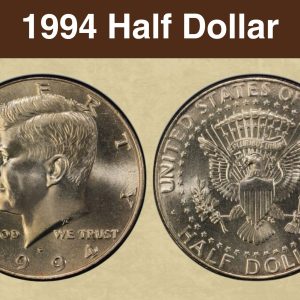
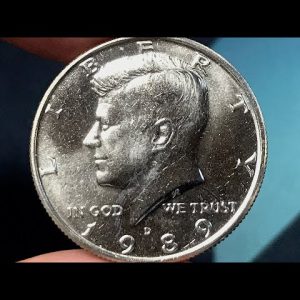
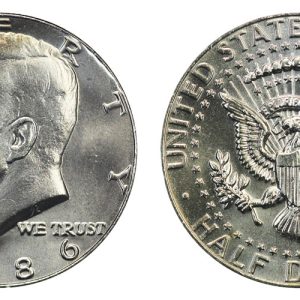
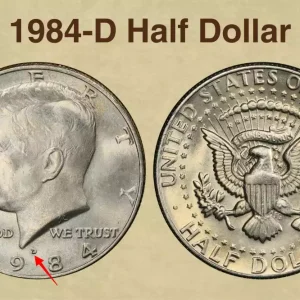
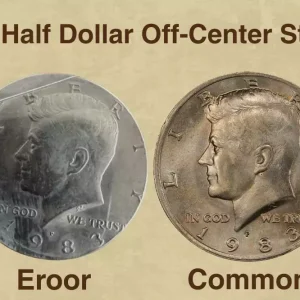
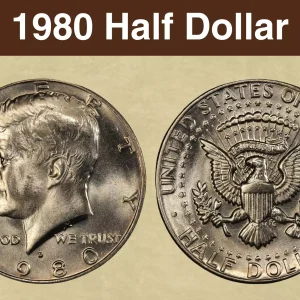
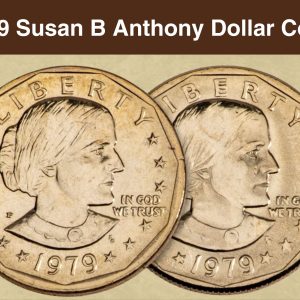
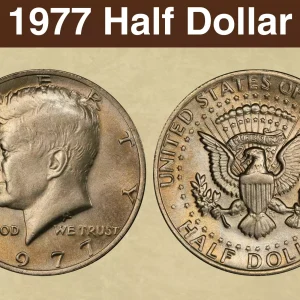
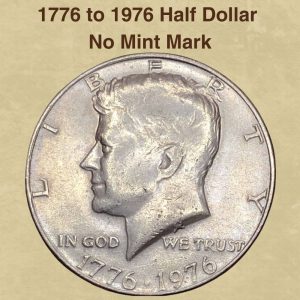
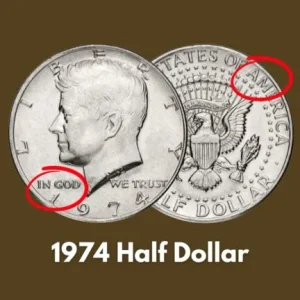
How much is a 1958 D half dollar worth?
The value of a 1958-D Franklin half dollar depends on its condition, ranging from about $15 for a circulated coin to over $300 for uncirculated versions. Coins with special features, such as Full Bell Lines (FBL) and high grades, can be worth significantly more, sometimes reaching into the thousands for top-tier specimens. The coin’s silver content is a baseline for its value.
What is the hardest Franklin half dollar to find?
The early proof issues from 1950-1954 represent the most valuable regular-issue Franklin half dollars, with the 1950 proof commanding over $500 in Proof-65 condition. The low mintages—especially the 1950 proof with only 51,386 pieces—make these coins genuinely scarce.
How to tell if you have a rare Kennedy half dollar?
These Accented Hair coins often show overly polished fields, softened devices, and extra hairlines, which may have been a response to early die wear. The lower left serif of the letter “I” in LIBERTY is typically missing, and the obverse appears subtly altered overall.
What are the key dates for Franklin Halves?
By mintages, the key dates in this series are the 1948, 1949-S, 1953 and 1955. Franklin half dollars have been extensively melted for their silver, and many dates are rarer than the mintage figures indicate.